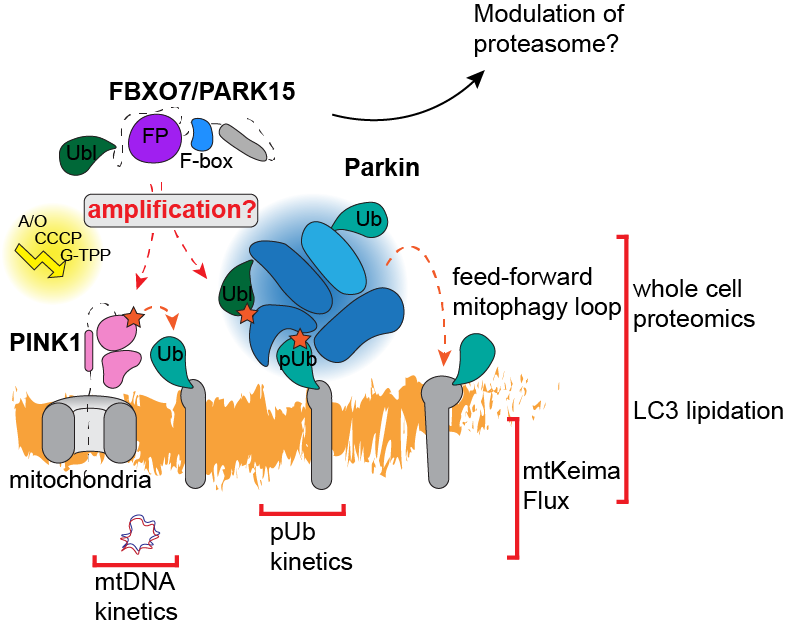
PARK15 / FBXO7 is a gene associated with Parkinson’s Disease (PD) with multiple proposed cellular functions. As a part of Aligning Science Across Parkinson’s collaborative research network, our lab aims to investigate the mode-of-action of FBXO7 in PD on a cellular level, especially with respect to its impact on organelle and protein quality control. Here, the Harper Lab dissected FBXO7’s role in PINK1/Parkin mitophagy in various cell systems.
In the paper, the Harper Lab generated knockouts of the PD associated gene PARK15 / FBXO7 in various cell culture systems, including stem-cell-derived iNeurons to test the effect FBXO7 has on the degradation of mitochondria (mitophagy), an important quality control mechanism in neurons disrupted in PD.
Building on improved methodologies to study autophagy from the Harper lab and others, the team build and applied a broad toolkit to study PINK1/Parkin-mitophagy, finding that FBXO7 is dispensable for degradation of the mitochondrial organelle, a finding that is supported by multiple orthogonal approaches (including proteomics, microscopy and biochemistry) in multiple cell systems.
In addition, our team shows for the first time direct biochemical association between SKP1-FBXO7 and PSMF1 (PI31), a negative regulator of the proteasome, suggesting the role of FBXO7 lies not in mitophagy but in modulating proteasomal activity.
In line with this observation, we measure moderate changes in kinetics after induction of the mitochondrial unfolded protein response (mtUPR) in FBXO7 knockouts, which, together with higher abundance of the proteasome in knockout cells, points to a potential role for FBXO7 in proteasome control - an exciting research avenue to explore in the future.